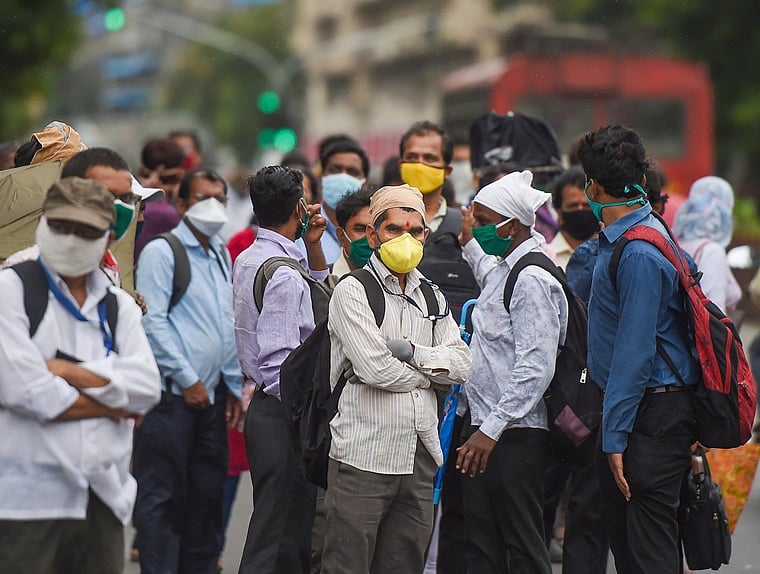A sero-prevalence study conducted by the Brihanmumbai Municipal Corporation (BMC), on 6,936 people from three municipal wards, found that 57% of participants in slums had been exposed to and developed antibodies against COVID-19 virus, as opposed to 16% in residential societies. The 'sero' survey report prepared by the NITI Aayog, Tata Institute of Fundamental Research and the BMC hinted that Mumbai, which currently has around 20,000 active cases, could be inching towards herd immunity.
Dr Behram Pardiwala, internal medicine expert, Wockhardt Hospital, South Bombay, agrees that we are heading towards herd immunity. “As the recent survey showed the incidence of antibodies to be about 57% in the slum population we can definitely say that herd immunity is on its way at least in this population segment,” he said.
Meanwhile, Dr Lancelot Pinto, Consultant Pulmonary Department, P.D.Hinduja Hospital & Medical Research Center, Mumbai, says there is optimism that with adequate precautions, we might gradually be able to return to normalcy.
“Sixteen percent in housing complexes is still a low number, and at present, a significant proportion of these individuals stay indoors. Once the lockdown is completely lifted, our success at controlling the epidemic will depend on universal masking, physical distancing and hand hygiene. The re-assuring part is that the high sero prevalence in the slums seems to have been achieved at a lower cost than what one would have anticipated, making the infection fatality rate very low. If this is indeed true, there is optimism that with adequate precautions, we might gradually be able to return to normalcy,” Dr Pinto said.
So what exactly is herd immunity? “For any contagious disease, the population will have individuals who are susceptible (vulnerable to getting infected), and those who are immune. The success of transmission in a community depends on the ratio of these two groups of individuals. Once a certain threshold is reached such that those susceptible are in a minority, the probability of transmission decreases, and an epidemic dwindles or ends. This threshold is called herd immunity, and it varies for different infectious diseases (more contagious the disease, higher needs to be the prevalence of those immune to achieve herd immunity),” Dr Pinto said.
While explaining what can be done to achieve herd immunity, Dr Pinto said, “There are only two ways in which herd immunity is achieved. One is deliberate (through vaccination): once a significant proportion of the population is immune through vaccination, herd immunity can be achieved. The other comes at a price through infection of a significant proportion of the population, the survivors of which are likely to have immunity as a consequence of infection and recovery.”
Dr Pardiwala, however, said there is a flip side to this. “The flip side to this however is that if you passively allowed this the chances of a higher mortality always exist especially among the compromised people dirty elderly those having blood pressure diabetes immuno-compromised, etc,” Dr Pardiwala said.
The sero survey also indicated that women were less prone to get coronavirus. To which Dr Pinto opined said that it might be “an immune phenomenon in which women were more likely to mount antibodies after an infection as opposed to men”.
“Fifty-three percent in males and 59% in females in slums, 14.9% and 16.8% respectively in non-slums isn’t a huge difference. The interpretation would be that women were more likely (not less) to get infected, and therefore more likely to develop antibodies. Taken at face value, one could assume that women, by being caregivers, were often exposed to more individuals at home in a closed space. But this needs to be interpreted with caution, it also needs to be seen in the context of mortality rates (for example, if more men with the infection died, then the prevalence of antibodies in the survivors is likely to be lower). It could also be an immune phenomenon in which women were more likely to mount antibodies after an infection as opposed to men. I do not think one should read much into these findings as the difference isn’t large, and it is difficult to interpret,” Dr Pinto said.
Adding to this Dr Pardiwala says, “The fact that a large number of women had the antibodies compared to men could be a reflection upon the social nature of women folk in the slums. They tend to congregate around the communal taps or around the local shop leading to decrease in social distancing leading to the spread of infection. There may be some other, as yet unknown, physiological reason also.”








